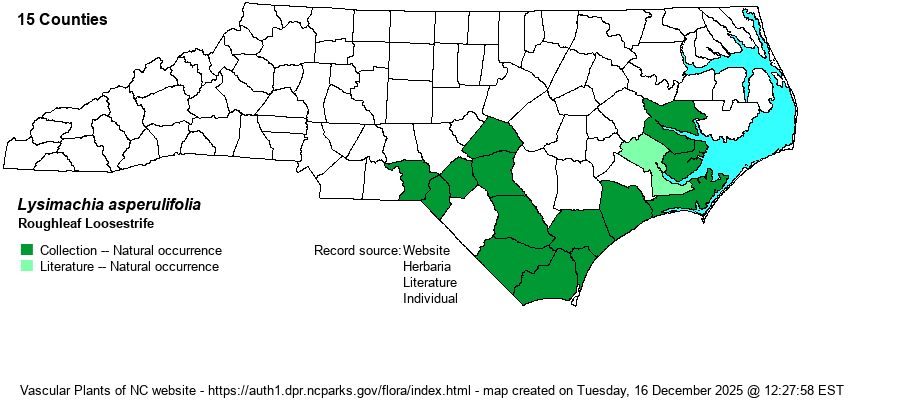| Author | Poiet | |
| Distribution | Present across much of the southern half of the Coastal Plain, including the Sandhills region. Ranges north to Beaufort and Harnett counties.
This is a Carolina endemic, found only in southeastern NC and eastern SC, in less than 20 total counties. | |
| Abundance | Rare over the NC range overall, but in well-managed natural areas it can be locally frequent; absent from areas without Longleaf Pine (Pinus palustris) habitats. This is a Federal and State Endangered plant, but because a moderate number of populations are known from the state, the NCNHP has given a State Rank of S3. | |
| Habitat | This is a species mainly of pocosin margins and seepage/streamhead pocosins, but it also occurs in wet pine savannas, mainly near their margins. It is thus more of an edge/ecotone species as opposed to growing in the middle of savannas. |
| Phenology | Blooms in May and June; fruits from August to October. | |
| Identification | This is an easily identified species, not only just for a Lysimachia species. It is usually unbranched, growing to about 1.5-2 feet tall, with numerous whorls of leaves. These leaves are typically blue-green (as opposed to bright grass green or dark green), in whorls of 3 or 4 leaves, each leaf lanceolate (but almost looking narrowly triangular), about 1-inch long and 1/2-inch wide at the base, pointed at the tip but square at the base, and entire on the margins. These leaves tend to have a leathery look, as well. The top 2-4 inches of the stem is a striking raceme of bright yellow flowers, each with 5 sharply pointed petals, and about 3/5-inch across. The species typically grows in dense stands, as do many of our Lysimachia species, and thus a colony in bloom can be seen from a great distance. Even without the flowers, the whorls of almost triangular leaves with a blue-green cast should catch attention as well. | |
| Taxonomic Comments | The species was formerly spelled as asperulaefolia. The "ae" in many species names are being changed to "i" by taxonomists.
Weakley (2020) has split out Steironema from Lysimachia based on a 2018 paper using molecular research; and in so doing has gone back to "old" taxonomy. In Lysimachia there are no staminodes and the leaves are punctate with elongate markings (vs. staminodes present and punctae absent in Steironema). | |
| Other Common Name(s) | Roughleaf Yellow Loosestrife, Pocosin Loosestrife. Weakley (2018) notes that the name asperulifolia (= rough leaf) is a misnomer, as this species does not have rough leaves, not by any means. | |
| State Rank | S3 | |
| Global Rank | G3 | |
| State Status | E | |
| US Status | LE | |
| USACE-agcp | OBL link |
| USACE-emp | OBL link |

